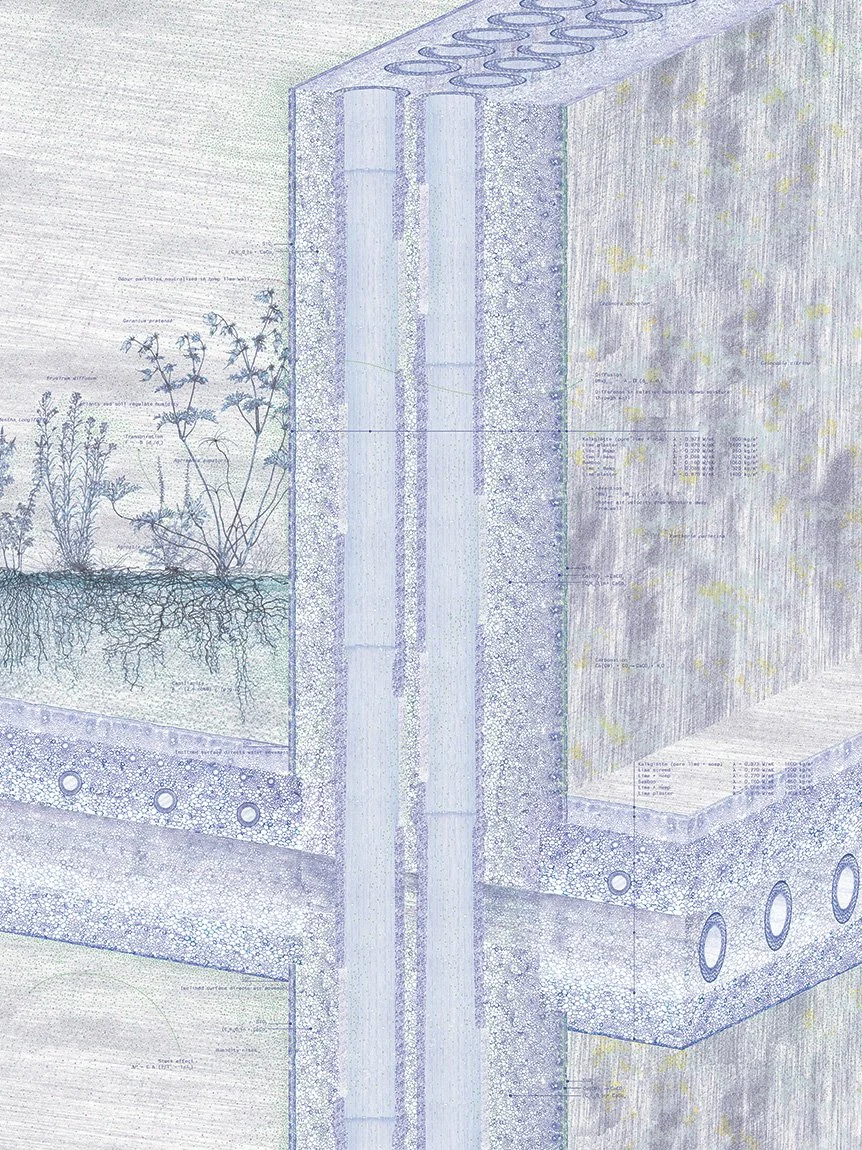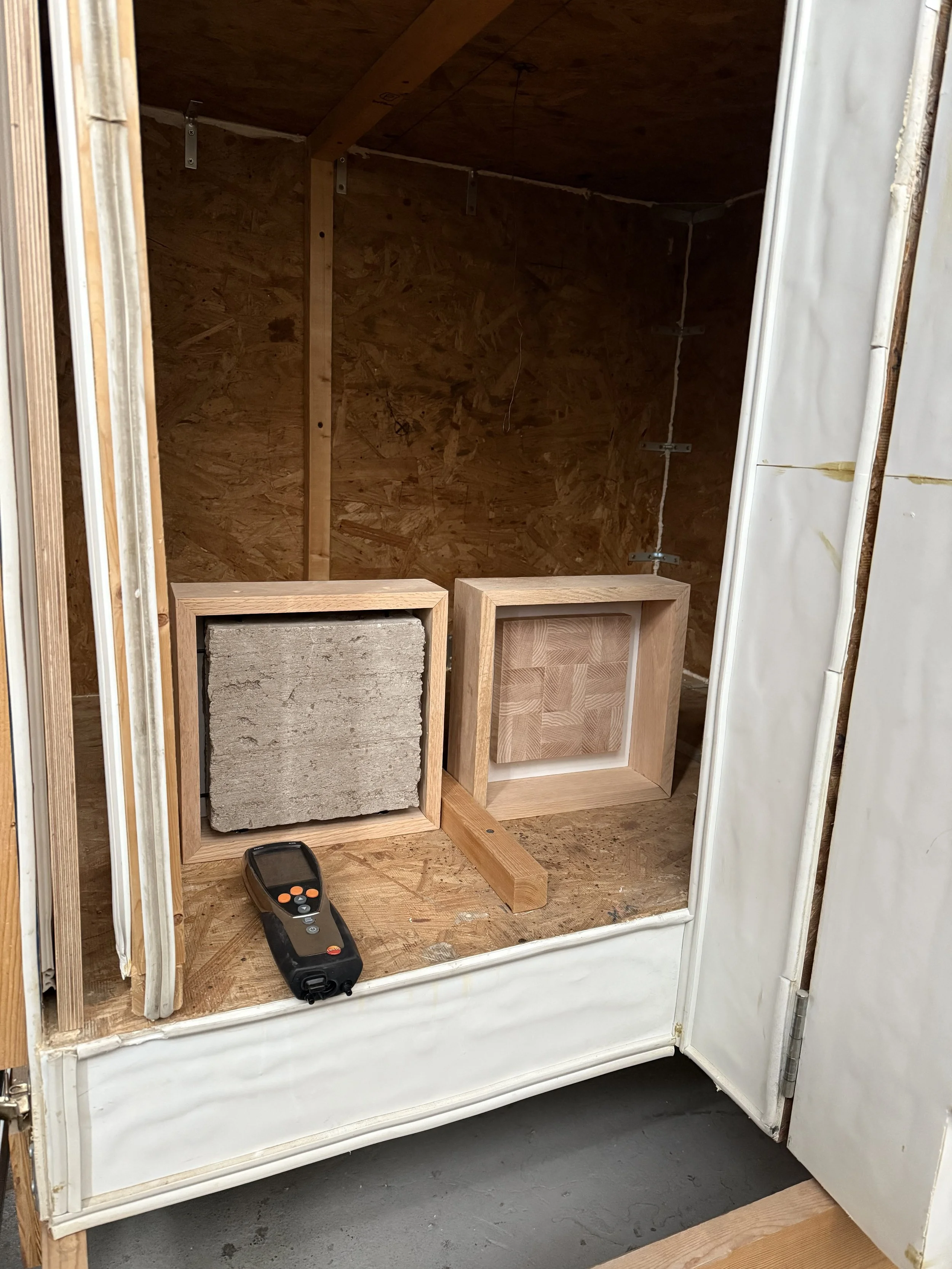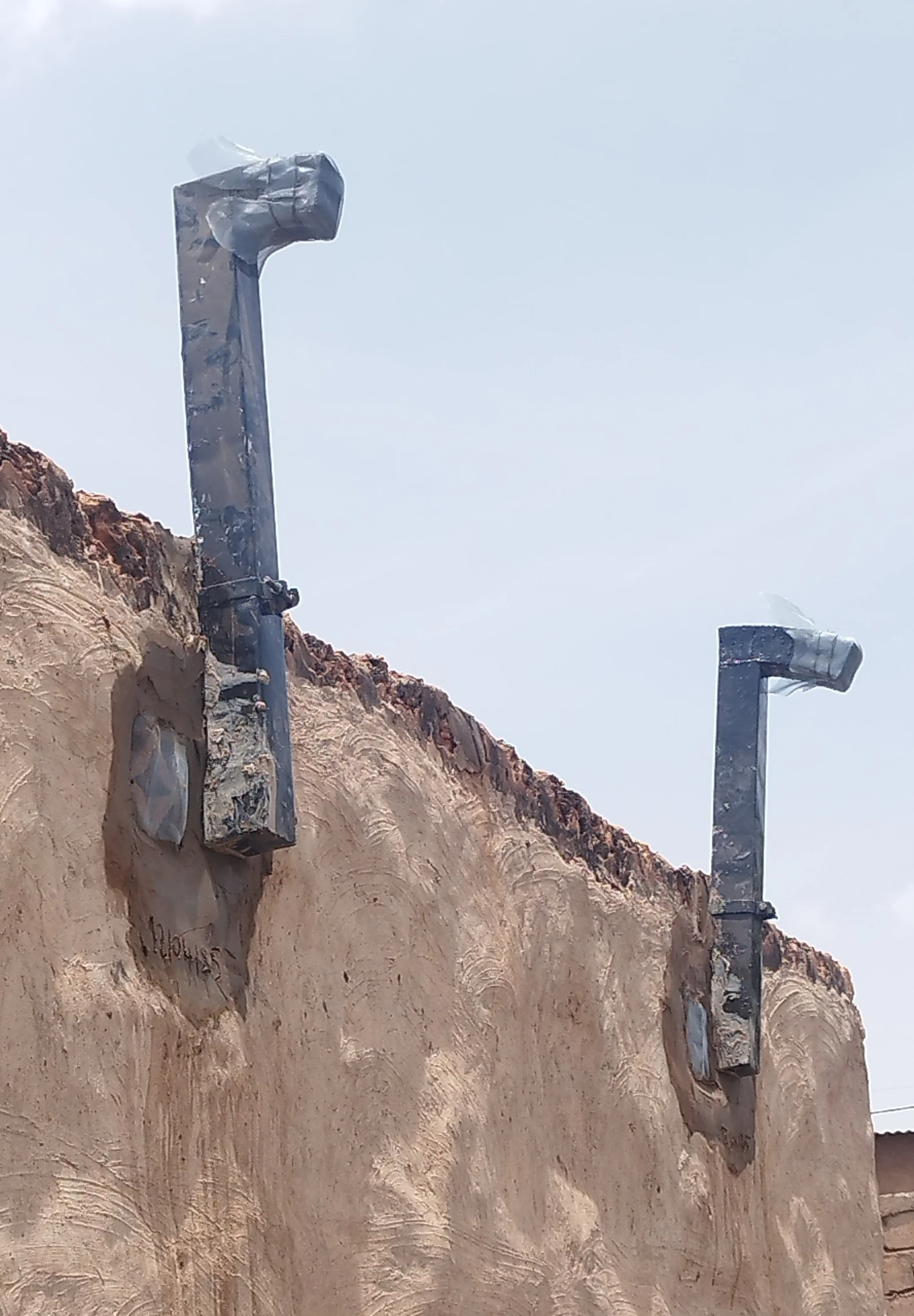Natural Dehumidification
High humidity levels in buildings are impacting the thermal comfort of occupants. In humid climates or in the humid season (summer), a large portion of the energy demand for building operation is required to dehumidify buildings. Conventionally, this is done by using air conditioning or chiller units to produce cold surfaces to cause condensation. Our natural driven dehumidification device uses a different principle. It uses surfaces made of a porous material to reduce the humidity level in the room by causing capillary condensation. The humidity is absorbed by the capillary structure of the porous natural material hempcrete. High air velocity on the external surface causes a drying effect of the hempcrete. The high air velocity is caused by a solar chimney. No mechanical ventilation is required to operate the natural driven system.
The natural ventilation system was a contribution to the Biennale Exhibition in the year 2025. It illustrates the interaction of the natural driven environmental control system with the bio-based material hempcrete.
Architectural Design: Steven Schenk
Technical Design: Lars Junghans
22/26 Midwest
The innovative integrative technology presented in this proposal, 22/26 Midwest, is based on and extends research on the design of net-zero buildings conducted at the University of Michigan in recent years. The original 22/26 building is in the cold climate of Lustenau/Austria. 22/26 Midwest builds on the above-mentioned technologies and adapts them for the climate in the midwestern US.
Implementation of a novel plug-and-play predictive building automation system
The novel predictive building automation system in “22/26 Midwest” will enable the control of the thermal status of the building by predicting and controlling the interactions between thermal flow and the internal thermal capacity of the building. The thermal capacity retains and releases heat in response to the ambient temperature.
Thermal and Hydrodynamic Capacity of Construction Materials
Higher thermal capacity or thermal mass inside the building is a key part of the 22/26 concept because higher thermal capacity reduces the energy demand for heating and cooling significantly. Internal thermal capacity works like a heat buffer. It absorbs heat when the room is hot and releases the heat when it is cold. The hydrodynamic property of certain materials absorbs the humidity from the room air and therefore reduces the relative humidity of the air.
Passive Cooling in Hot Arid Climates
Design interventions to improve the thermal comfort in informal settlements in the hot arid climate of Burkina Faso have been investigated with a thermal dynamic building simulation tool. The goal is to find cost effective methods to reduce the heat stress of occupants of settlements in the global south. Improvements to reduce the room and surface temperature as well to increase the room air velocity have been compared. Technical recommendations have been provided for realized test buildings in Burkina Faso. One part of the research work was the design of a simple solar chimney to provide better ventilation (image).
The research was conducted for the University of Heidelberg, Germany.



